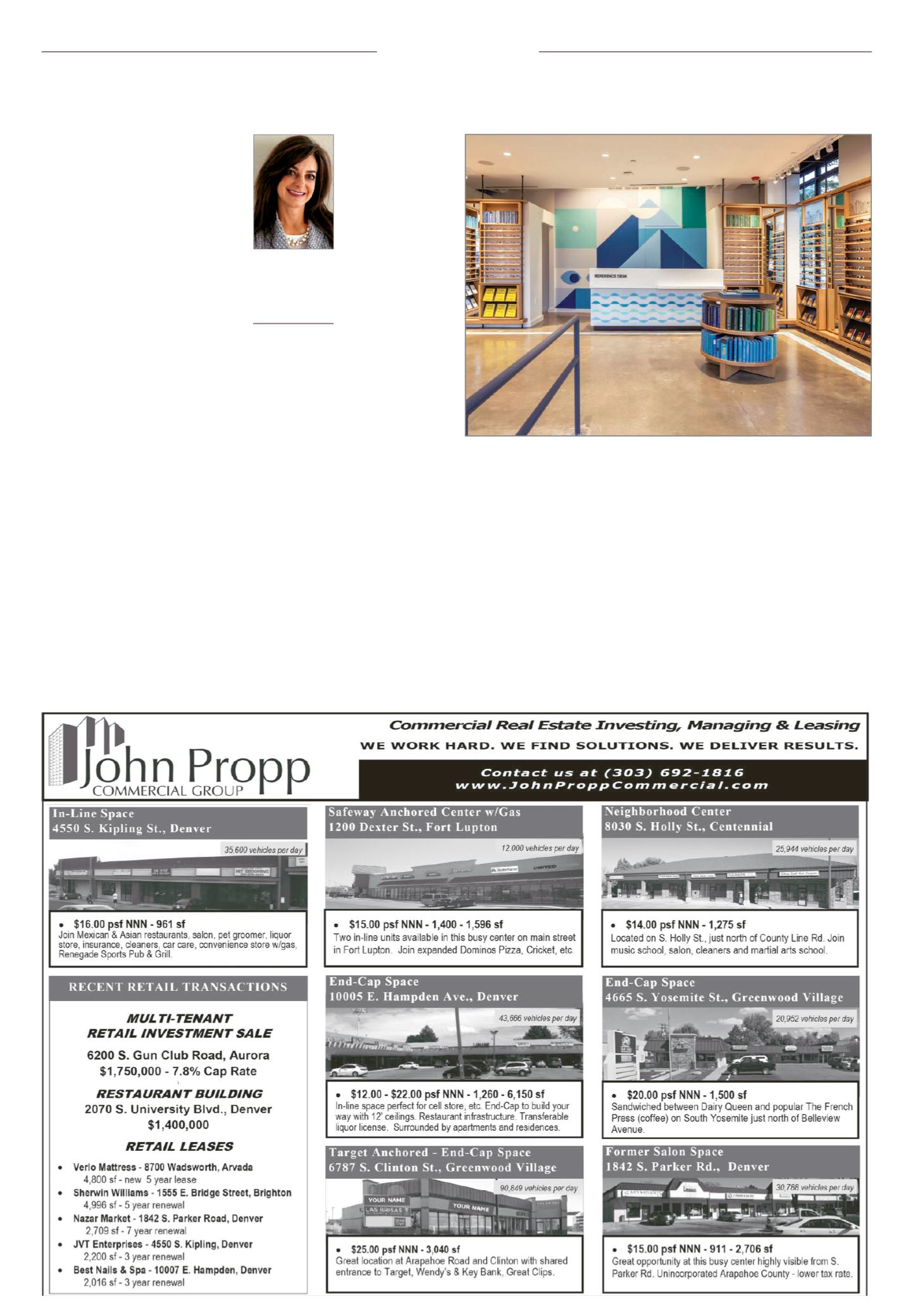

Page 16
— Retail Properties Quarterly — November 2017
www.crej.comT
he phenomenon of clicks to
bricks is considered the next
frontier for e-commerce.
Online retailers have mas-
tered the art of getting visi-
tors’ attention, keeping it and con-
tinuing the conversation with cus-
tomers well beyond their visit. Yet,
online retailers increasingly are
realizing that there are still a few
key things standing between them
and their customers – the major
one being the human connection.
Many customers want to touch, try
on and enjoy that personal atten-
tion that comes with a showroom
experience.
For this reason, we’re start-
ing to see new visions for the
“brick” store to complement the
“click” (online) store. The physi-
cal store is about showcasing and
often attempts to turn the retail
experience into retail-tainment.
Vendors recognize that caring
about the customer experience is
crucial. Along with an emotional
pull, brick-and-mortar stores have
proven to be integral to customer
loyalty, returns and fulfillment,
and even can be a driver of online
sales.
The physical store still remains
king of retail, even if we continue
to see an increase in digital sales
and mobile shopping. Of the $3.4
trillion of retail sales in the U.S.,
$3 trillion of that, or almost 90
percent of it, takes place in brick-
and-mortar stores, according to
an article from DMN, a provider of
digital and data-driven marketing
analysis, research and content.
Physical stores are proving cru-
cial to supporting
a retailer’s online
growth. Within six
weeks of opening
a new store, traf-
fic to the retailer’s
website from the
surrounding postal
area increases by
52 percent, accord-
ing to a report
from British Land,
using data from
Connexity Hitwise.
Brands with
fewer than 30
stores were impacted the most
from store openings, with aver-
age local traffic to their websites
increasing 84 percent, the report
found. This means that brick-and-
mortar stores enables a retailer
to drive interest online while also
sharing with the shopper the full
brand experience.
When it comes time for these
retailers to make the leap – to grow
an online store by moving offline –
there already are industry leaders
whose footsteps they can follow.
These e-commerce retailers have
found success by using shopping
malls kiosks, locating on college
campuses, building pop-ups and
featuring kiosks in hotels. Online
retailers must be creative and be
willing to test the waters in order
to give customers a memorable
experience.
There are three digitally native
retailers that have nailed this phe-
nomenon.
•
Warby Parker.
The company
started in 2010 as an online eye-
wear business and opened its first
brick-and-mortar store in 2013.
Within 48 hours of the company’s
website launching, customers
began calling to see if they could
come to the office to try on the
glasses. At that time, even though
the employees were working from
their home, they allowed it.
From there the company’s vision
became very clear. It must satisfy
people’s desire to try and feel their
glasses before making a purchase.
The idea for the Warby Parker
showroom and pop-ups was born.
One of the company’s retail adven-
tures was called “Class Trip” and
involved driving a yellow school
bus 4,350 miles across the U.S.,
visiting and setting up pop-ups
in nine cities. The company’s co-
founder, David Gilboa, is attributed
with saying that the future of all
retail will have some online com-
ponents as well as some offline
components.
•
Bonobos.
The online “perfect-
fit” khaki company started in 2007
and opened its first brick-and-
mortar store in 2011. After repeated
Clicks to bricks: The next e-commerce frontierRetail Trends
Lisa Macneir
Director of business
development,
Scheiner
Commercial Group
Inc., Monument
Warby Parker
Warby Parker’s Boulder showroom was built to complement the retailer’s online presence.
Please see Macneir, Page 27















